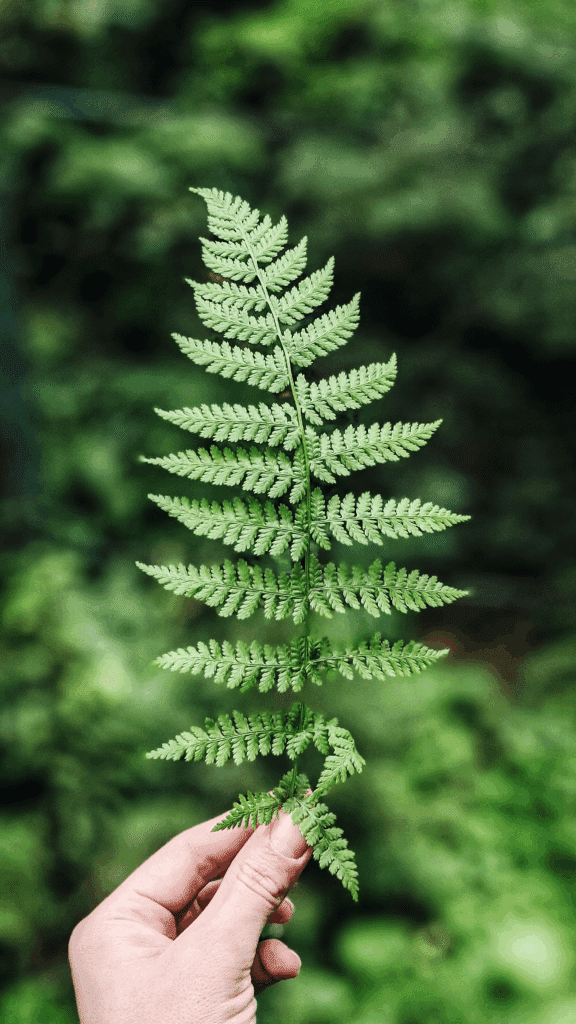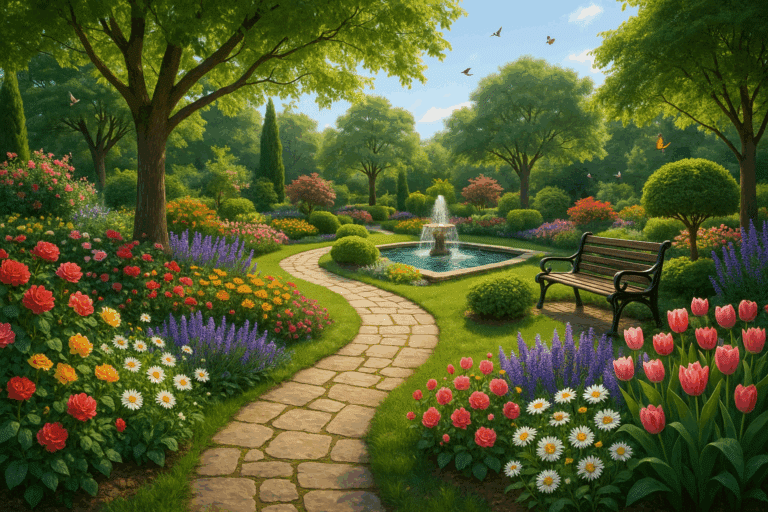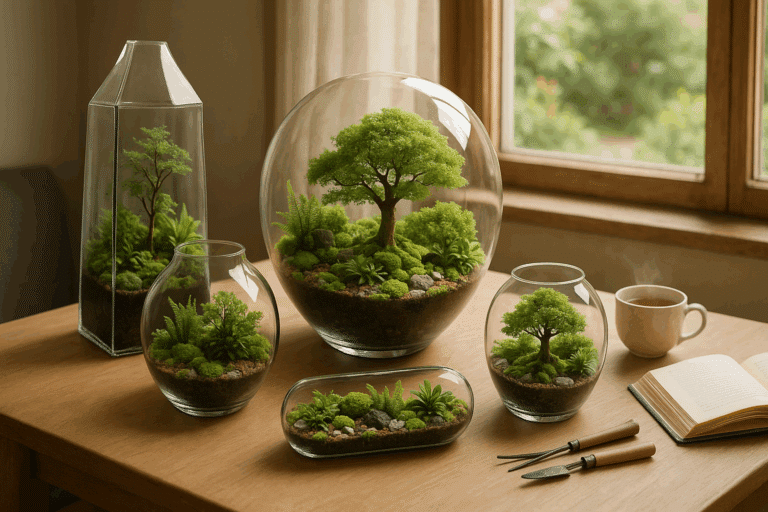Say goodbye to wasted space and hello to your personal, cozy oasis teeming with life and greenery. The potential of your home’s underutilized nooks and crannies is about to be unlocked! 🏡💚

In this comprehensive guide, we will be delving into the step-by-step process of turning the under-stairs area into a haven of tranquility. From choosing the right plants that thrive in low light conditions to incorporating elements of design to enhance the aesthetic appeal of your green nook, this guide covers it all. It’s more than just home improvement; it’s about bringing nature indoors and creating a space that not only looks good but also contributes to your overall well-being. 🌱
Brace yourself for an exciting journey towards creating an under-stairs green nook that radiates calmness, evokes tranquility, and serves as your little escape from the world. Whether you’re an expert DIYer or a novice in home transformations, this guide will provide you with all the insights you need. Your cozy oasis awaits! 🍃
Planning Your Under-Stairs Green Nook
Creating an under-stairs green nook is a comprehensive project that requires sound planning and architectural understanding. The first consideration should be the available space. Evaluating the width, depth, and height of the area will provide a clear canvas on which to work. Once you have the dimensions, you can then start thinking about the design elements you wish to incorporate. Here are some questions that you might find useful in your planning phase:
- Do you want a green nook that includes seating, or would you prefer a space purely for plants?
- What kind of lighting will the space have? Is there natural light, or will you need to consider installing grow lights?
- What type of plants are suitable for your space considering light and humidity levels?
The answers to these questions will help guide your design and ensure the practicality of your green nook.
Structural Considerations
Beyond flooring and walls, it’s also crucial to think about drainage under the stairs. Since the plants will need regular watering, there is always a risk of leakage or moisture buildup. To mitigate this, you can use drip trays beneath pots or elevate planters on stands with saucers. This helps to contain excess water, protect your flooring, and makes cleaning much easier.
Another structural upgrade that can greatly enhance your green nook is installing appropriate lighting. Built-in LED spotlights, wall sconces, or adjustable LED strips not only highlight the visual appeal of your plants but also provide supplemental light—especially helpful in spaces that lack direct sunlight. Opting for grow lights with timers ensures that your plants maintain a consistent light cycle, even during cloudy days or evenings.
Choosing the Right Plants
The planters and stands you choose will also influence the overall layout and functionality of your indoor garden. Self-watering planters are a great option for those seeking convenience, as they reduce the frequency of watering. Vertical stands or tiered shelves are ideal for maximizing space, allowing you to layer plants at varying heights. Consider trailing plants like English ivy (Hedera helix) or golden pothos (Epipremnum aureum) for upper levels, letting them cascade down elegantly along the structure or walls.
Blending Style with Practicality
When designing your under-stairs green nook, it’s essential to blend aesthetics with function. Think about how this space integrates with the rest of your home’s decor. Whether your home leans toward minimalism, rustic charm, tropical vibrancy, or boho chic, your plant nook can reflect that same theme. Neutral ceramic pots, woven baskets, reclaimed wood, or matte black metal planters all offer style options that support different looks.
For added convenience, consider incorporating a compact bench with storage drawers or a small cabinet to keep gardening tools, fertilizers, gloves, and watering cans neatly tucked away. This will not only keep your green nook tidy but will also make plant care more accessible without disrupting the visual flow of the space.
Low Light Plants
If your space does not receive much natural light, you may want to consider plants that can thrive in low light conditions. Some of these include:
- The ZZ Plant (Zamioculcas zamiifolia): Known for its ability to survive in low light and requiring very little water.
- The Snake Plant (Sansevieria): Another plant that thrives in low light and has the added benefit of being an excellent air purifier.
Medium to High Light Plants
If your green nook is fortunate enough to receive ample natural light—whether through nearby windows or skylights—you can experiment with a broader variety of plant species. These plants not only thrive in brighter environments but also tend to exhibit lush growth and striking visual appeal.
Another excellent choice is the Rubber Plant (Ficus elastica). It features thick, glossy leaves and a deep green hue that adds rich texture to your plant display. The rubber plant enjoys bright, indirect sunlight and prefers its soil to dry slightly between waterings.

Bird of Paradise (Strelitzia reginae) is another showstopper. With its banana-like leaves and potential for producing exotic, bird-shaped flowers, this plant makes a bold statement. It needs bright light, including some direct sunlight, to truly flourish indoors.
Peace Lily (Spathiphyllum), while more tolerant of lower light, will reward a medium to bright location with more frequent flowering. It’s also an excellent air purifier, making it both beautiful and functional.
By mixing plants with varied leaf shapes, sizes, and growth habits, you can create a layered, visually rich space under the stairs that feels like a mini botanical garden.
Adding Lighting and Irrigation
Lighting is perhaps the most critical factor after plant selection. If your under-stairs area receives insufficient natural light, supplemental grow lights become essential. LED grow lights are ideal—they’re energy-efficient and can be tailored to emit specific wavelengths needed for plant photosynthesis. Look for full-spectrum LEDs that mimic sunlight for the best results.
Position the lights close enough to your plants to be effective—typically 12 to 24 inches away—while avoiding direct heat on sensitive leaves. Consider installing adjustable arms or ceiling-mounted tracks so you can shift lighting as your plant arrangement evolves.
Irrigation, too, plays a vital role in maintaining plant health, particularly if your green nook features numerous plants or if it’s hard to reach regularly. A drip irrigation system is a practical choice. It delivers water slowly and directly to the roots, reducing water waste and preventing fungal issues from overwatering the foliage.
Modern systems can be discreetly installed behind or beneath your planters, maintaining the visual appeal of the space.
Smart Controls
To maximize both efficiency and plant well-being, smart technology can be incorporated seamlessly into your under-stairs garden. Smart plugs and timers can be used to automate lighting cycles based on your plants’ needs. Pair these with a mobile app, and you can adjust light durations and intensity remotely.
For irrigation, smart moisture sensors can detect when the soil is dry and activate your drip system accordingly. Some systems even offer integration with smart home assistants like Alexa or Google Home, allowing voice control of your garden’s functions.
With these enhancements, your green nook becomes more than just a decorative element—it evolves into a living, breathing ecosystem that thrives with minimal effort and maximum efficiency.
Final Touches to Your Green Nook
Once your plants are in place and the technical aspects are taken care of, it’s time to add the final touches. These elements can transform your green nook from just a functional space into a cozy oasis that brings you joy every day. Whether you’re looking to create a space for reflection, creativity, or simple relaxation, the right ambiance can make all the difference.
Creating a Relaxing Ambiance
To start, think about how you want to feel in your green nook. If you’re aiming for tranquility, consider incorporating soft lighting. A small table lamp or a string of warm fairy lights can add a gentle glow, ideal for unwinding in the evening. Battery-powered or solar-operated options can also be helpful if your under-stairs area lacks nearby electrical outlets.
A cozy armchair, bench, or even a floor cushion with throw pillows can invite you to sit down and stay awhile. Choose materials that are breathable and easy to clean, especially since your nook will likely have some moisture due to plant watering. For added comfort, consider including a small side table where you can rest a cup of tea, a journal, or your favorite book.
Decorative Elements
The finishing touches on your green nook could include decorative elements like unique planters, atmospheric fairy lights, or even a small water feature for that soothing sound of running water. Think of your green nook as a canvas—every detail, from the textures to the colors, contributes to the overall mood.
Decorative planters can be an expression of your personal style. Whether you prefer ceramic pots, woven baskets, or minimalist white containers, make sure they coordinate with your home’s interior while highlighting the natural beauty of your plants.
Wall art can also play a role. Try adding botanical prints, miniature mirrors to reflect light, or handmade macramé hangings for a boho vibe. If space allows, installing a small wooden shelf or two can help display trailing plants or your favorite knickknacks.
Don’t forget scents. A subtle essential oil diffuser with calming oils like lavender, eucalyptus, or sandalwood can enrich the sensory experience of your green nook, transforming it into a full-blown retreat for the senses.
Adding Functionality
Beyond aesthetics, your green nook can also serve a practical purpose. With thoughtful additions, this small area can become a mini productivity zone or a wellness corner. Include a notebook and pen to jot down thoughts, a timer for meditation, or a small Bluetooth speaker for ambient sounds or relaxing music.
You can also store your gardening tools discreetly in a nearby cabinet or storage box to keep everything you need within arm’s reach. Vertical storage solutions like hanging organizers can make use of wall space without cluttering the area.
Maintaining Your Green Nook
Regular maintenance will keep your under-stairs green nook looking lush and vibrant. This involves watering the plants as needed, trimming dead leaves, and checking for any signs of plant disease or pest issues. It’s helpful to keep a simple care calendar or app to remind you when to water, fertilize, or rotate your plants.
Humidity and airflow are also important. Consider adding a small fan if the area feels too damp or stagnant, especially if your nook is enclosed. For homes in drier climates, a compact humidifier can help tropical plants thrive and keep the air more comfortable for you too.
Finally, dust your plants occasionally. Indoor leaves can collect dust over time, which blocks light absorption and diminishes their aesthetic. A quick wipe with a damp cloth can help keep them healthy and shiny.
Conclusion
In conclusion, an under-stairs green nook is an innovative way to transform unused space into a cozy oasis. Implementing this idea brings a touch of nature into your home, creating an atmosphere of tranquility and relaxation. The green nook not only adds aesthetic value but also improves your home’s air quality, making it a healthier living environment. By choosing the right plants that thrive in low light and require minimal care, you’ll have a beautiful green space that’s easy to maintain. Additionally, incorporating comfortable seating and ambient lighting can make the space inviting for reading, meditating, or simply enjoying some quiet time. From a design perspective, an under-stairs green nook can seamlessly blend with your existing home decor, adding a unique character to your living space. Furthermore, such a green space can be a conversation starter when you have guests over. In essence, transforming your under-stairs space into a green nook is a brilliant home improvement idea that combines aesthetics, wellness, and functionality. It’s a testament to how thoughtful design can turn even the most overlooked spaces into beautiful, functional parts of your home. So why wait? Create your cozy oasis today and enjoy the benefits of having a slice of nature in your home.



